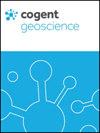Numerical modeling of virus transport through unsaturated porous media
引用次数: 4
Abstract
Abstract This paper describes the movement of virus in one-dimensional unsaturated porous media. The governing virus transport equations consider the inactivation in liquid phase, liquid–solid interface, air–liquid interface, and sorption in both liquid–solid and air–liquid interfaces. Finite-volume method has been used for solving the advection and dispersion processes of the virus transport equation. The effects of transport parameters on virus concentration profiles have been investigated for virus present in liquid phase, adsorbed liquid–solid and liquid–air phases. The results show that the movement of viruses in three phases is affected by soil moisture, inactivation rate, pore velocity, and mass transfer coefficients. It is found that the magnitude of virus sorption is higher at the air–liquid interface as compared to the liquid–solid interface. A higher value of mass transfer coefficient leads to an increase in the virus concentration in both liquid–solid and air–liquid interfaces.病毒在非饱和多孔介质中传播的数值模拟
摘要本文描述了病毒在一维不饱和多孔介质中的运动。控制病毒输运方程考虑了液相失活、液-固界面失活、气-液界面失活以及液-固和气-液界面的吸附。用有限体积法求解了病毒运输方程的平流和扩散过程。对存在于液相、吸附液-固和液-气相的病毒进行了转运参数对病毒浓度谱的影响研究。结果表明,病毒在三个阶段的运动受土壤湿度、失活率、孔隙速度和传质系数的影响。结果表明,与液固界面相比,病毒在气液界面的吸附幅度更大。传质系数越高,液-固界面和气-液界面的病毒浓度越高。
本文章由计算机程序翻译,如有差异,请以英文原文为准。
求助全文
约1分钟内获得全文
求助全文

 求助内容:
求助内容: 应助结果提醒方式:
应助结果提醒方式:


